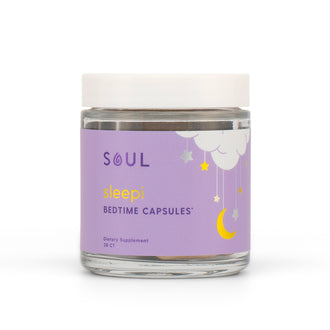
Hemp is a variety of the Cannabis sativa plant that is now legally grown across the United States, thanks to the 2018 Farm Bill reform. This change legalized the farming, harvesting and processing of industrial hemp for commercial use at the federal level, also making products produced from it legal in all states. Unfortunately, a lot of misconceptions and misunderstandings exist surrounding this magnificent plant. We’re hoping to clear up some of those for anyone who might still be confused.
First, Let’s talk about what hemp isn’t.
Hemp is not marijuana, and hemp does not contain high amounts of tetrahydrocannabinol (THC). Legally, industrial hemp may have only 0.3% THC, and the same goes for any products made from it. This means that products made from hemp, such as CBD drops, are not going to have psychoactive effects.
But why is hemp even a thing?
Well, hemp has been a part of human history for literally thousands of years. There’s evidence of hemp being produced and used for various purposes in diverse regions.
Archaeological evidence suggests it was grown and cultivated in regions of modern-day China as far back as 6,000 years ago, where it was used for everything from building materials to traditional medicines. From this area, hemp is believed to have spread westward into Europe and northern Africa. Research shows that it was used in various cultures and civilizations, including the Egyptians, Assyrians, Greeks, and Romans.
The criminalization of the Cannabis sativa plant is a pretty modern phenomenon, and in the U.S. dates back to laws passed in the early 20th century related to prohibition. Before that, it was legal to grow and harvest hemp. The entire history of hemp in America is truly fascinating and worth learning more about. So, really, the recent legal adjustments are just putting us back on track to productively using hemp once again.
How are we using hemp in the 21st century?
The revitalization of our relationship with hemp is seeing it being used in various ways across several industries. Let’s take a look at some prominent ways hemp is being used in the 21st century to better understand its usefulness and importance as a crop.
As an eco-friendly building material – Hempcrete is being used on construction jobs across the country. It is a mixture of limestone and hemp shives, a wooden part of the plant that would otherwise be discarded. While not stronger than concrete, it is fire-resistant, pest-resistant and a good insulator, making it an excellent choice for several uses.
As a sustainable alternative to trees for paper products – Hemp is an efficient and fast-growing alternative to trees. While trees can take decades to reach maturity, hemp crops can be harvested in as few as four months and grown on any farmable land. The pulp made from hemp is also superior to that of trees, as hemp paper products don’t yellow with age or crack and deteriorate at the same rate. This is thanks to hemp fibers being up to five times longer than those of trees.

As a source for the creation of sustainable bioplastics – If you hadn’t heard, we can now make plastic from plants instead of dead dinosaurs. This means less drilling and burning of fossil fuels. And hemp is top of the list when it comes to crops being eyed for this use. Pure hemp bioplastics are still rare, but we’re looking forward to the day when they’re more plentiful. Because in addition to being less earth-damaging to produce, they can also biodegrade in under a year versus the up to 500 years most regular plastics take.
As a nutritional supplement – Hemp seeds, in particular, are receiving a lot of attention lately, with some calling them a superfood. They can be eaten as seeds or pressed into oil. When eaten whole, hemp seeds are nutritionally dense. They’re full of those essential fatty acids you hear so much about, like linoleic acid (omega-6) and alpha-linolenic acid (omega-3). And they’re a trustworthy source of other nutrients like vitamin E and minerals, such as phosphorus, potassium, magnesium, calcium, iron and zinc. They have a pleasant taste similar to sunflower seeds. Oh, and they’re also a great protein source.
As a form of traditional medicine and adjunctive therapy – When it comes to using hemp as traditional medicine or adjunctive treatment, most folks are finding benefits, thanks to special compounds called cannabinoids that interact with our endocannabinoid systems. Top among these is cannabidiol, more commonly known these days as CBD. Now products like CBD capsules and CBD gummies can help deal with challenges ranging from anxiety to headaches to sleep issues.

The Future of Hemp
The hemp industry will only continue to grow, which is excellent news for all of us already seeing the richness and possibilities held within this magnificent plant. At Soul CBD, we’re most excited about the ongoing research that validates hemp’s benefits and delves into other potential uses. We’re really looking forward to seeing hemp become a staple of the 21st century, and we hope you do, too.




